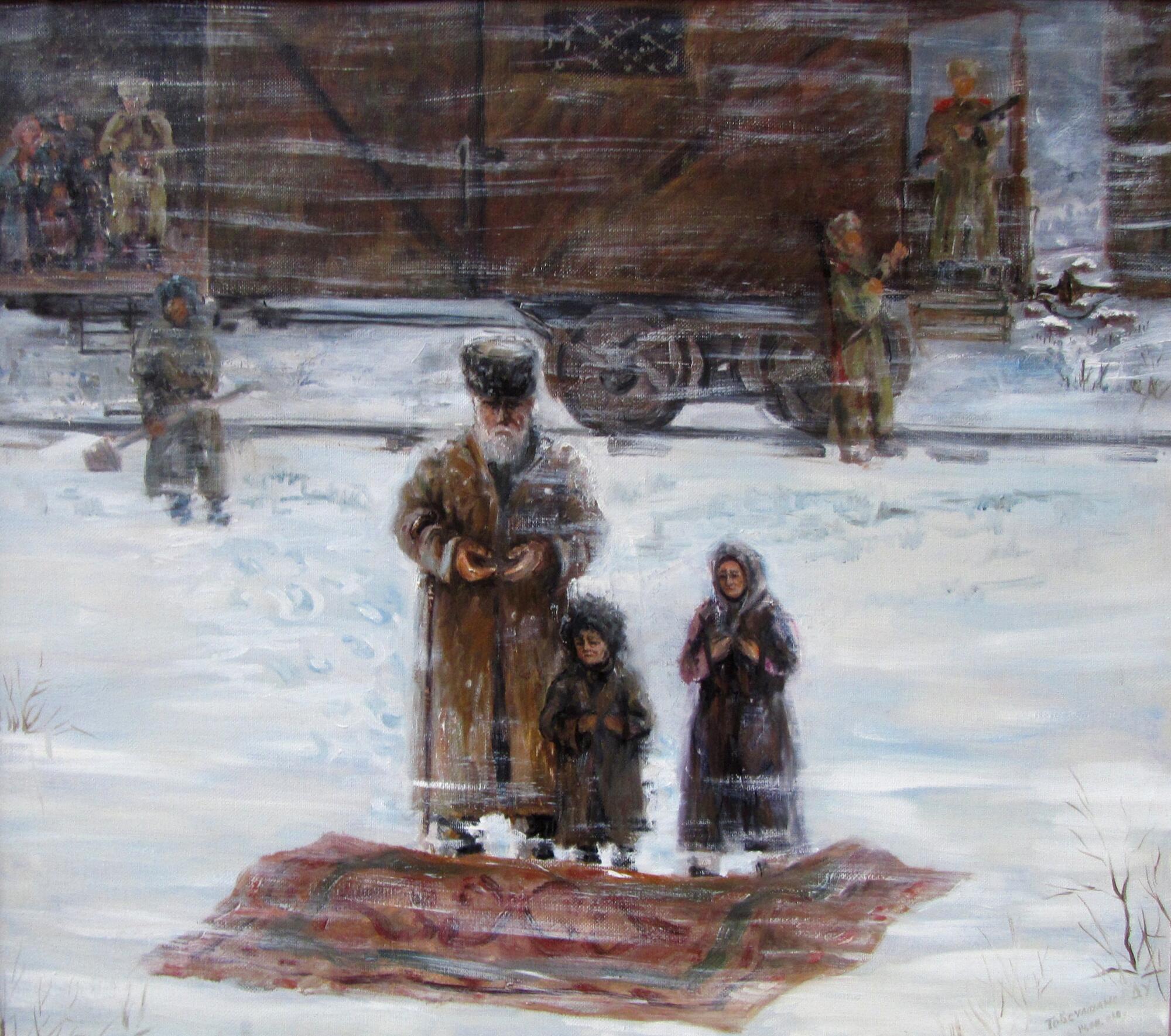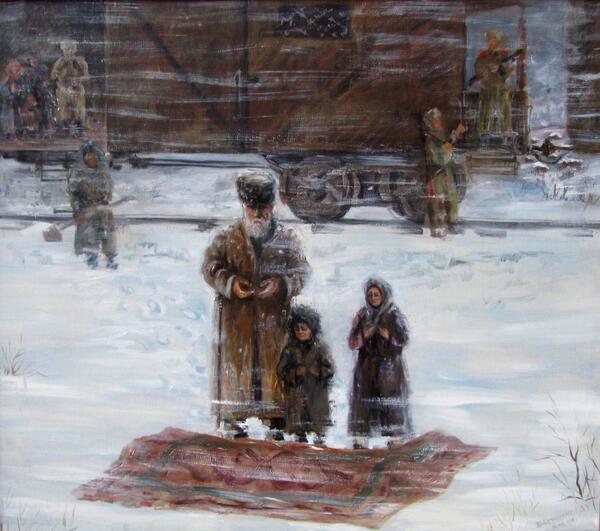Jamaluddin Tovsultanov’s painting “Funeral on the Way” is part of a series of works “1941. Repression” created in 2010. This work was inspired by the events in the 1940s when, according to various estimates, around 500,000 to 650,000 Chechens and Ingush were deported from the North Caucasus. The official reason given by the Soviet authorities was cooperation with the German occupiers and the anti-Soviet activities of residents. But in reality, they could not cooperate with the enemy, because there was no occupation in those places. The real reasons for the exile are still unknown to this day.
The deportation began on February 23, 1944, and ended on March 9 that same year. Chechen and Ingush women who were married to men of other nationalities were not subject to deportation. However, Russian women were sent to Kazakhstan and Kyrgyzstan together with their husbands and children. People were transported to the new places in board wagons, that were intended for a total of 28-20 people but instead accommodated 45 people, and sometimes even more — up to 100-150. Because of the difficult conditions en route, malnutrition and typhus epidemics, many died on the way. Bodies were often simply carried out of the wagons and left in the snow.
The painting by Jamaluddin Tovsultanov captures this exact moment. In the foreground stands an old Caucasian man in a fur coat and high hat, and next to him there are two children. In front of them, there is a carpet on the snow, and bodies can be seen under it. The hands of the portrayed are folded in a gesture of prayer over the deceased: they are probably reciting dua, a prayer in their native language, a form of address to Allah. In the background, the artist depicted a freight car, with people sitting in its doorways and guards with guns standing nearby.
Jamaluddin Tovsultanov was born in 1953 in the village of Myrza-Ake in the Osh region of the Kyrgyz SSR. His parents were deported there in 1944. At the age of 21, Tovsultanov entered the Izberbash Pedagogical School, from which he graduated four years later, in 1978. He received another education in the mid-1990s, at the art and graphic arts department of the Dagestan Pedagogical University.
The deportation began on February 23, 1944, and ended on March 9 that same year. Chechen and Ingush women who were married to men of other nationalities were not subject to deportation. However, Russian women were sent to Kazakhstan and Kyrgyzstan together with their husbands and children. People were transported to the new places in board wagons, that were intended for a total of 28-20 people but instead accommodated 45 people, and sometimes even more — up to 100-150. Because of the difficult conditions en route, malnutrition and typhus epidemics, many died on the way. Bodies were often simply carried out of the wagons and left in the snow.
The painting by Jamaluddin Tovsultanov captures this exact moment. In the foreground stands an old Caucasian man in a fur coat and high hat, and next to him there are two children. In front of them, there is a carpet on the snow, and bodies can be seen under it. The hands of the portrayed are folded in a gesture of prayer over the deceased: they are probably reciting dua, a prayer in their native language, a form of address to Allah. In the background, the artist depicted a freight car, with people sitting in its doorways and guards with guns standing nearby.
Jamaluddin Tovsultanov was born in 1953 in the village of Myrza-Ake in the Osh region of the Kyrgyz SSR. His parents were deported there in 1944. At the age of 21, Tovsultanov entered the Izberbash Pedagogical School, from which he graduated four years later, in 1978. He received another education in the mid-1990s, at the art and graphic arts department of the Dagestan Pedagogical University.



